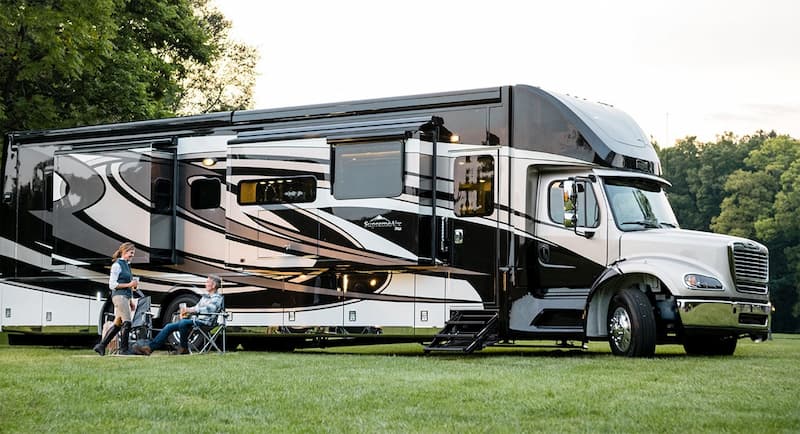Importance of Battery Monitors
You’ll probably glance at your phone at least a couple of times, just to make sure that you have enough charge to last till the morning. The same goes when you’re out camping when necessities like fridges and lights are draining the battery. You’ll want to have a device that shows just how much is left of your battery. And you have to factor in variables like weather, available sunlight and temperatures and how these affect all the different parts of your solar setup. Calculating how much power each appliance or device needs, and the duration you’ll be using them is a start. You don’t want to be left without power, in the middle of nowhere.
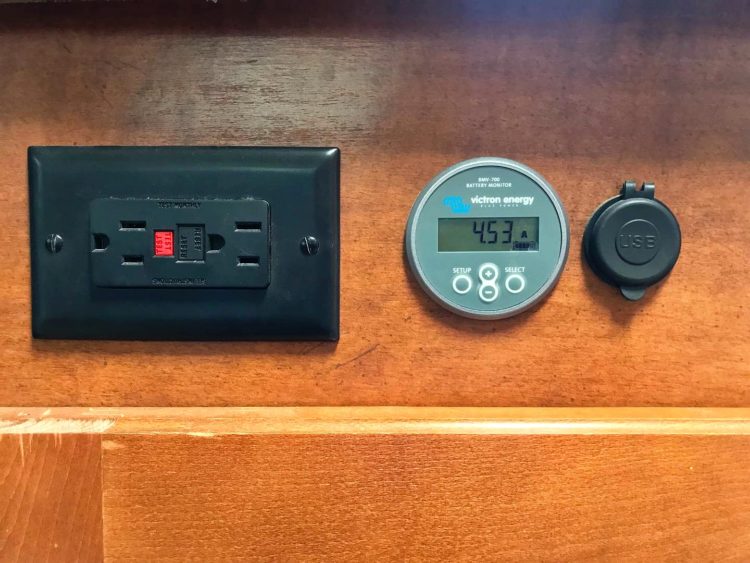
This is where battery monitors come in. They might not be necessary for a basic setup, with a few appliances that you use during a short weekend, but for longer trips, and for families and campers with bigger energy needs, they’re irreplaceable. Monitors provide a multitude of information, the most important possibly being if you will be able to run all the stuff you need till the end of your trip.
What are Battery Monitors?
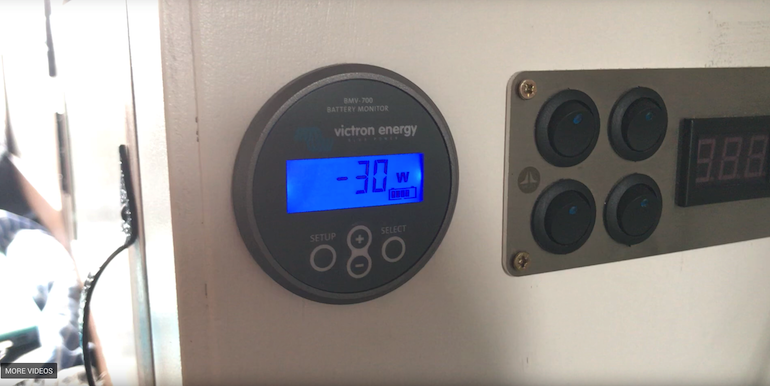
Battery monitors are small electronic devices that do complicated calculations so you don’t have to. They’re tailored to measuring various parameters in off-grid power setups with the battery as the main power source. They provide real-time data as to the amount of charge the battery is receiving and how much power is being consumed by appliances and devices at any given time. Most will also tell you how much charge is left. Some can also calculate the time left to power devices you’re using until the battery goes flat. Something which is not particularly recommended. This lets you adjust your power usage and involve different charging options to sustain battery health and longevity.
Battery monitors hail from battery setups in marine applications but have spread to camping vehicles and also are a staple in residential solar setups. A camper trailer battery monitor can track single batteries in simpler units, or as is more often the case, a dual battery setup. Both lead-based and lithium batteries in different capacities can be monitored.
How do Battery Monitors Work?
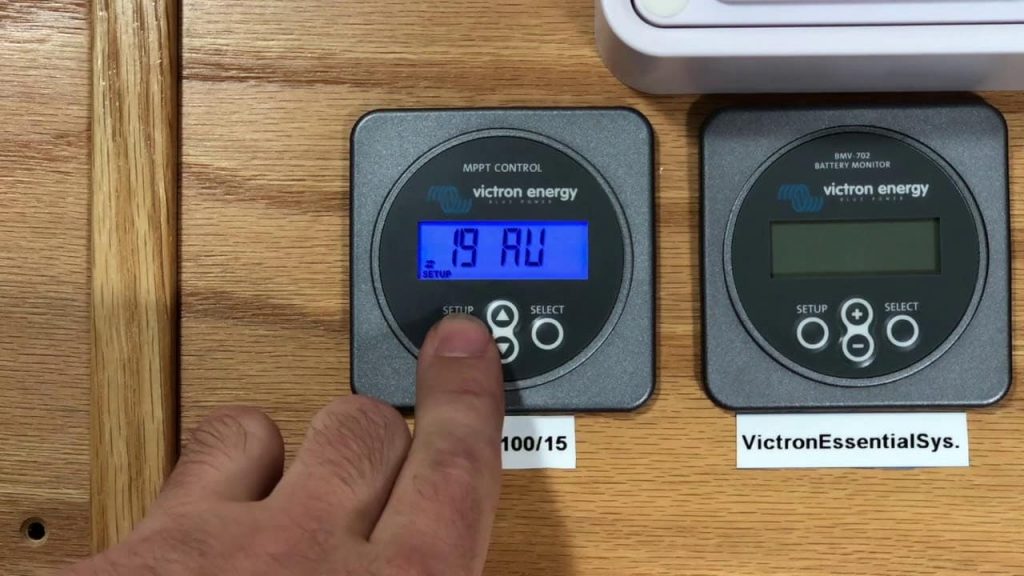
There are two basic types of battery monitors, voltage-based or shunt-based monitors. Voltage-based are simple voltmeters and less expensive options that measure the battery’s voltage. These are not very accurate, since they don’t take into account different variables, like temperature and battery type. Changes in voltage readings are rough estimates that tell you about the remaining battery capacity, whether the battery is charging or discharging, and can signal potential faults in the setup. Most are pre-installed in campervans or motorhomes, but you can choose your battery monitor type when buying these vehicles new.
Shunt-based battery monitors are ammeters or multimeters and comprise the majority of battery monitors sold today. They provide for more accurate readings since they connect directly to the battery terminals by way of a shunt, or a resistor made of metal, which is used to calculate the voltage drop and resistance between the two terminals to measure real-time time current. Different readings are displayed, including amperage, voltage, remaining amp-hours and the battery charge. This gives you information about the amount of current feeding into the battery from the panels or another power source, and the amount being drawn from the connected devices. You’ll be able to assess how efficient the solar panels are under different conditions and different times of day. You can also measure how much current is drawn from an individual device, say a portable fridge during a specific duration of time.
What to Look for in Battery Monitors?
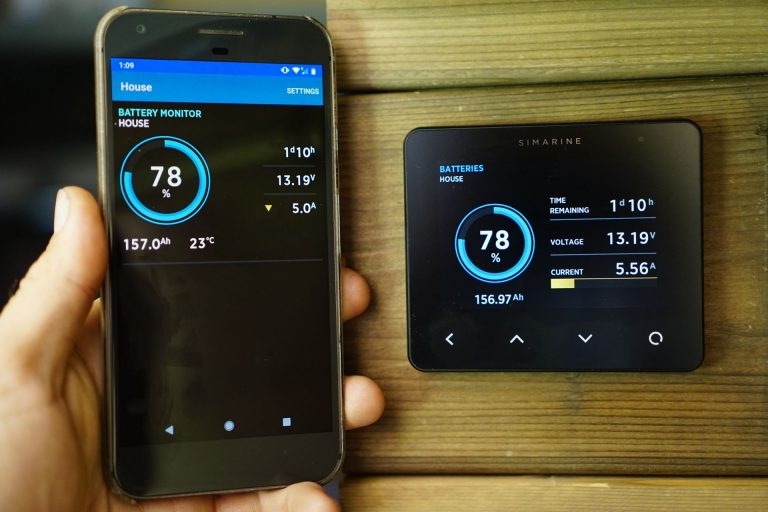
With different monitors available, here’s what to look for:
- Price – Depending on the type of solar setup you have, and the total investment in panels, inverters, charge controllers and the number of batteries, you can go for simple voltmeters or more costly but also more accurate shunt battery monitors. In more complex systems, a dedicated battery monitor will not only prolong battery life, especially lead batteries, but also keep all other equipment in check.
- Display and Data – All information about voltage, power and current, are displayed on LCD or LED screens. Look for monitors will high voltage and current ranges, as they can provide more accurate readings in different solar setups. With optional sensors and probes, monitors can also show battery temperatures. Readings are easy to toggle through, and all screens are highly legible, even in the cheapest models.
- Apps and Connectivity – Bluetooth connectivity and apps are a good way to get real-time data, even when you’re away from your vehicle. Apps will provide all parameters on the display, and warn of any issues, like extremely low charge levels, meaning you need to run the generator to avoid power failure. They also record your power usage patterns, giving you relevant feedback at different times.
- Ease of Installation – The less time it takes to set up a battery monitor, the better. Installation instructions are provided for all monitors. Display units are equipped with connecting cables and the necessary mounts to fit different types of vehicles. Most units are easily and quickly installed. If you’re uneasy about the job, get a certified electrician to do it.
Decide which features are necessary and get the device that best suits your solar installation. Your batteries will last longer, and you’ll always have enough power. Hardware, camping and stores stocking electrical meters are the places to search for your next camper trailer battery monitor.

